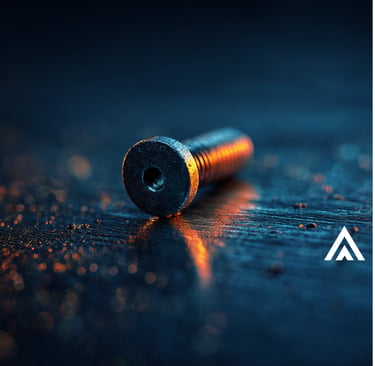ADADwhy?
Christian Hansen
8/19/2025


ANADWHY
Why ANADAI is called ANADAI and what AI has to do with loose screws.
About ten years ago, at the invitation of SUPSI, I sat in on a machine learning course for the first time – and since then, at the latest, I have been hooked on the idea of “intelligent machines”.
A few years later, ChatGPT came out. I started experimenting with roles, perspectives, prompts and tasks. I had ChatGPT take on different roles – sometimes a sceptical investor, sometimes a visionary strategist, sometimes a pragmatic implementer, sometimes a ruthless competitor.
Suddenly, a dialogue developed that I had never experienced before. And I realised: this is it. This is the point where everything I've done so far – theatre, technology, strategy, psychology, communication – comes together. Assigning characters to AI, breaking through linear ways of thinking, allowing loops and detours instead of taking the most obvious path to the goal.
Developing a method: AI is more than just a better search engine
Gradually, I developed my method for human-AI collaboration. I read, tested, observed and learned how to converse with an LLM. Not as a writing assistant. Not as a better search engine. But as a digital counterpart. After about two years, I realised that I was working with Agentic AI in a very different way to most people. While others were using AI for linear queries, I was using it for iterative, adaptive thought processes. And, despite my high standards, I seemed to be much happier with the results.
Because I've always enjoyed starting projects, the thought immediately occurred to me: why not bring it to market?
When technology meets human traits: almost omnipotent, yet helpless
A few successful test coaching sessions later, I was sitting in the kitchen with a cup of coffee, reading brand eins. It featured an article about an AI project in Japan: the technology helped overcome language barriers in a company with over 40 nationalities – it worked pretty much perfectly, with a few exceptions: the AI simply did not understand the company's internal technical terms. One of these terms was ANADAI. That's what they call an inadequately fastened screw in the factory.
I liked the story. The AI did what it does best: breaking down barriers that were previously almost impossible to overcome. But it (still) failed when it came to human idiosyncrasies, little quirks and subtleties.
Human-in-the-loop: The future of AI collaboration
This is precisely why we need humans in the loop – a dramaturg who allows for a great deal, is willing to learn, but intervenes to correct when necessary. The ANADAI method is not about controlling AI, but about directing it. Like directors with their ensemble: giving space for creativity, experimenting patiently, but retaining responsibility for the result.
These theatre methods make a significant difference when working with AI: instead of using it as a tool, it becomes a thinking partner in a creative, iterative process. That is the approach of my coaching programme.
When I was still looking for a good name for my offering, I remembered this article and dug out the brand eins issue. ANADAI – nice and short, sounds good, relates to the topic. It looks chic when written down and the letters A and I are still in there.
That's why: ANADAI.
For me, it's not just a name, but also a little reminder that technology is great – but without human guidance, it sometimes has a screw loose. And it urgently needs someone to tighten that screw before the product leaves the factory.
ANADAI
Team up with AI
hello[at]anadai.net
+41 78 720 08 83
© 2025. All rights reserved.
Ahornstrasse 17
CH 4055 Basel
Impressum & Privacy
